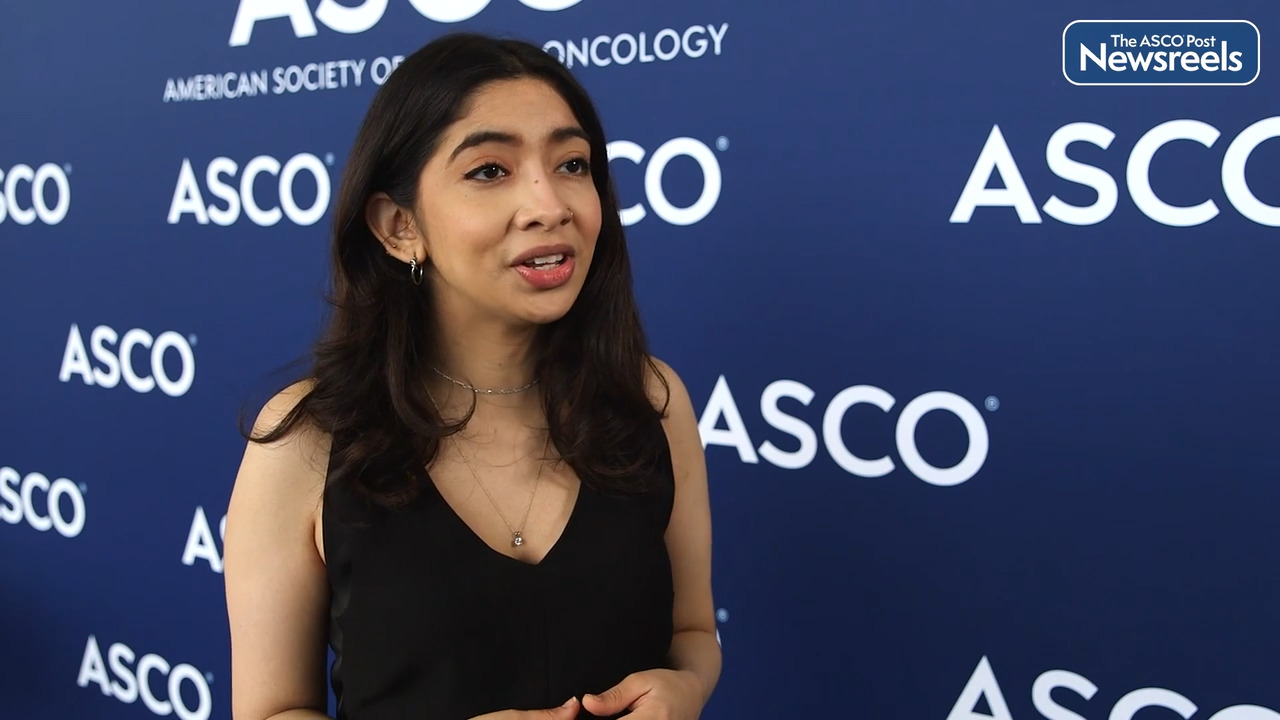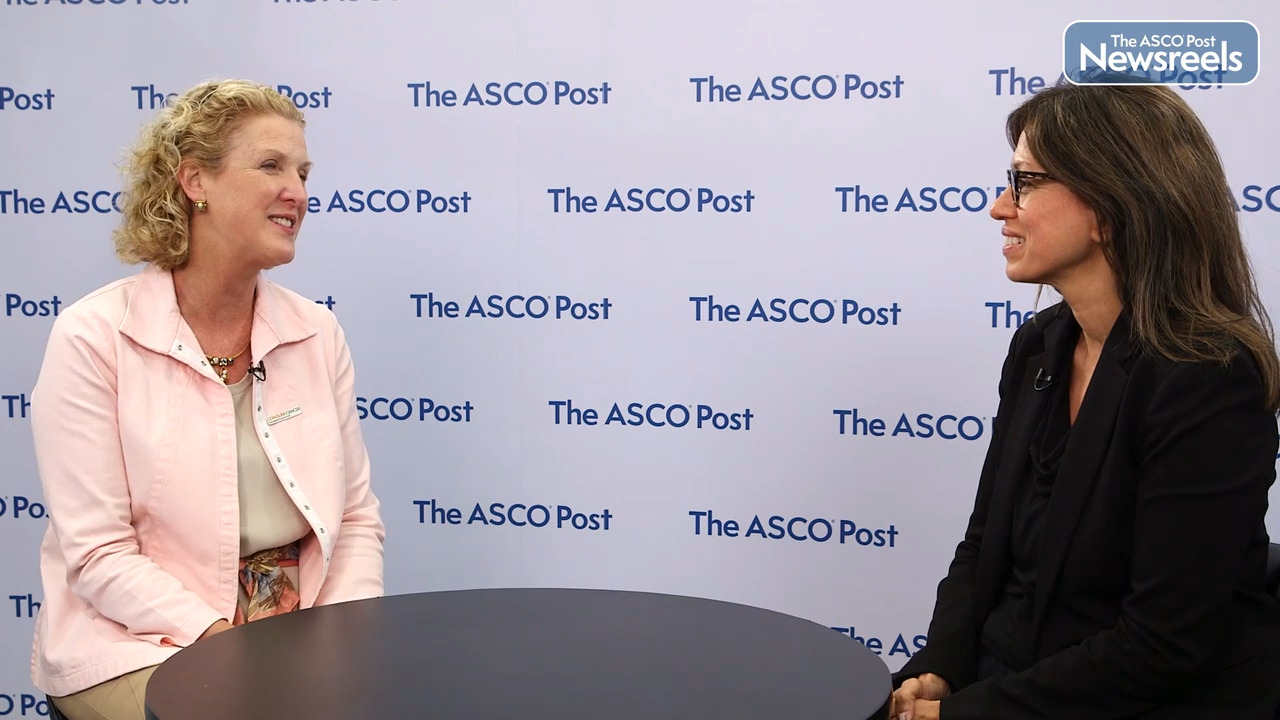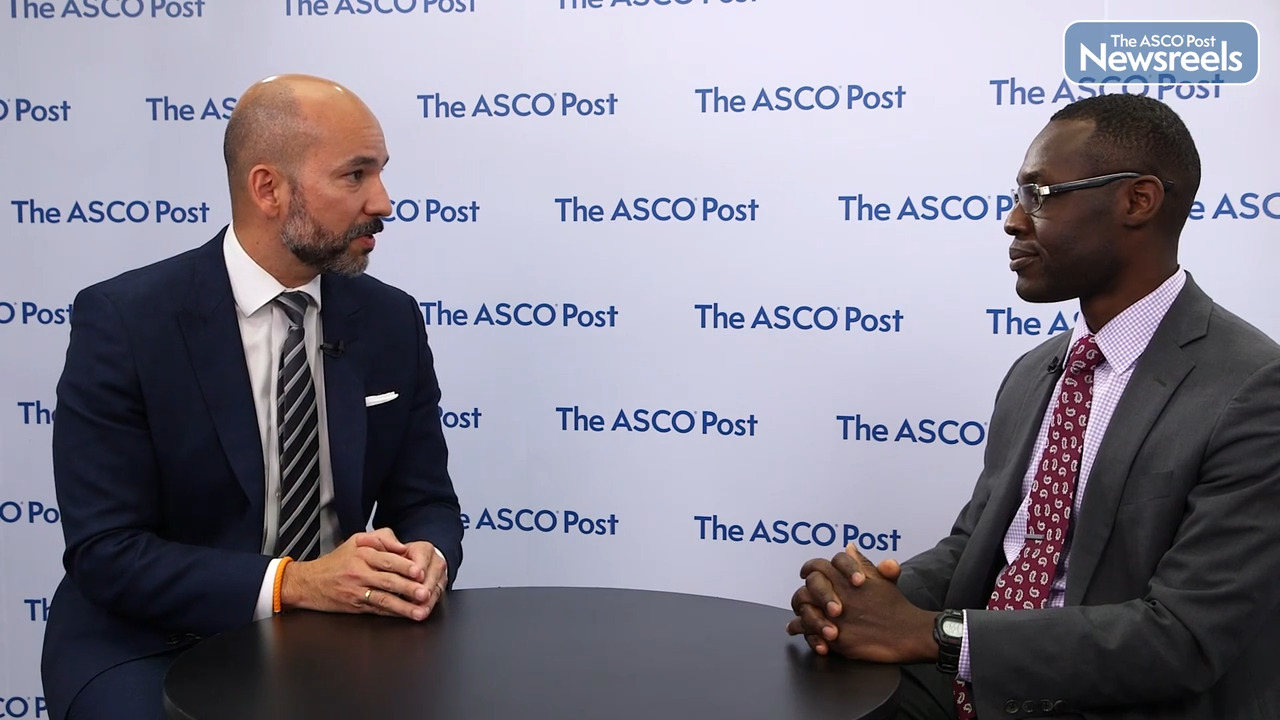Sumanta K. Pal, MD, on Urothelial Carcinoma: New Results on Cabozantinib Plus Atezolizumab
2022 ASCO Annual Meeting
Sumanta K. Pal, MD, of City of Hope National Medical Center, discusses findings from the COSMIC-021 study, which showed that cabozantinib plus atezolizumab demonstrated encouraging clinical activity with manageable toxicity in patients with inoperable locally advanced or metastatic urothelial carcinoma. The combination was administered as first-line therapy in cisplatin-based chemotherapy–eligible and –ineligible patients and as second- or later-line treatment in those who received prior immune checkpoint inhibitors (Abstract 4504).
Transcript
Disclaimer: This video transcript has not been proofread or edited and may contain errors.
The COSMIC-021 study is a trial that includes multiple different histologies, multiple different cohorts. At this year's ASCO meeting, ASCO 2022, I presented data pertaining to cohorts three, four, and five. This specifically looked at patients with advanced urothelial carcinoma. The composition of each of the cohorts was distinct. In cohort three, we had patients that were cisplatin-ineligible. In cohort four, patients that were cisplatin-eligible. And finally, in cohort five, patients that had received prior immune checkpoint inhibitors. What ultimately it boiled down to is about 30 patients per cohort. In terms of the distribution of patients, it was predominantly male, as you might expect. Most of the patients had a bladder primary, although we did actually have good representation of upper track tumors, ureteral tumors, and so forth. That was about 30% of the study population. Amongst those patients that had received prior immune checkpoint inhibitors, about 30% had received one prior therapy implying immune-based treatment, and about 68% had received two or more prior lines of treatment. What we saw was actually a graded response. In patients who were cisplatin-eligible we saw the highest response rate, 30%. In patients that cisplatin-ineligible we saw a response rate of 20%. And finally, in patients that had received prior immune checkpoint inhibitors, we saw a response rate of 10%. It's always tricky to know what endpoints to follow in these relatively small studies. One thing that really I found intriguing was the duration of response. And with substantial follow up at this point in time, we still haven't reached the median duration of response amongst those patients that were cisplatin-eligible. I really think that the toxicity profile that we saw in this study really mimics what we've seen in other experiences of cabozantinib with atezolizumab. The combination seems to be very well tolerated. We used a dose of cabozantinib at 40 milligrams. The rates of hepatitis, the rates of other toxicities that you'd expect with a combination like diarrhea, were very reasonable and manageable by and large. So in summary, I think that this combination really does have activity. My hope is that we'll be able to study it further in certain contexts. And in particular, there's a study ongoing right now that I'll plug, MAIN-CAV through the Alliance. It's led by Dr. Shilpa Gupta. This trial I think is a prime way for us to understand the role of cabozantinib with immunotherapy where that combination's being assessed in the maintenance setting.
Related Videos
The ASCO Post Staff
Jenny S. Guadamuz, PhD, of Flatiron Health, discusses the use of telemedicine services in community oncology clinics for patients initiating treatments for 21 common cancers during the COVID-19 pandemic. Black, uninsured, non-urban, and less affluent patients were less likely to use telemedicine services. Although telemedicine may expand access to specialty care, the proliferation of these services may widen cancer care disparities if equitable access to these services is not ensured, according to Dr. Guadamuz (Abstract 6511).
The ASCO Post Staff
Lisa A. Carey, MD, of the University of North Carolina Lineberger Comprehensive Cancer Center, and Shanu Modi, MD, of Memorial Sloan Kettering Cancer Center, discuss the phase III findings from the DESTINY-Breast04 trial, which compared fam-trastuzumab deruxtecan-nxki (T-DXd) vs treatment of physician’s choice (TPC) in patients with HER2-low unresectable and/or metastatic breast cancer. T-DXd is the first HER2-targeted therapy to demonstrate clinically meaningful improvement in progression-free and overall survival compared with TPC in this patient population, regardless of hormone receptor or immunohistochemistry status or prior use of CDK4/6 inhibitors (Abstract LBA3).
The ASCO Post Staff
Gilberto de Lima Lopes, Jr, MD, MBA, of Sylvester Comprehensive Cancer Center at the University of Miami, and Oladimeji Akinboro, MD, MPH, of the U.S. Food and Drug Administration (FDA), discuss a data analysis, which suggests that most subgroups of patients with advanced non–small cell lung cancer with a PD-L1 score of 50% or greater who are receiving FDA-approved chemotherapy/immunotherapy regimens may have overall survival outcomes comparable to or better than immunotherapy-alone regimens (Abstract 9000).
The ASCO Post Staff
Timothy J. Whelan, MD, of McMaster University and Hamilton Health Sciences, discusses findings from the LUMINA study, which found that women aged 55 or older who had grade 1–2 T1N0 luminal A breast cancer following breast-conserving surgery and were treated with endocrine therapy alone had very low rates of local tumor recurrence at 5 years. These patients, the research suggests, may be able to forgo radiotherapy (Abstract LBA501).
The ASCO Post Staff
Rami Manochakian, MD, of Mayo Clinic Florida, discusses the phase II findings of the NADIM II trial, which confirmed that, in terms of pathologic complete response as well as the feasibility of surgery, combining nivolumab and chemotherapy was superior to chemotherapy alone as a neoadjuvant treatment for locally advanced, resectable stage IIIA non–small cell lung cancer (Abstract 8501).





